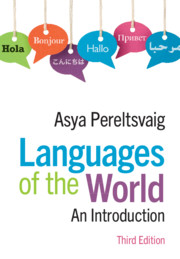This study provides a linguistic perspective on the structure and the interpretation of a key historical narrative in Umpithamu (a Pama-Nyungan language of Cape York Peninsula, Australia), against the background of a larger corpus of narrative texts in Umpithamu. The analysis focuses on the role of participant tracking devices in the macro-structure of the narrative, and the role of case marking in the build-up of narrative motifs. It is argued not only that marked types of participant tracking serve to mark the boundaries of episodes, as often noted in the literature, but also that some types have additional functions within episodes, which leads to a proposal for refinement of Fox's (1987) Principle of Morphosyntactic Markedness. On a micro-structural level, it is shown how a rare system of case marking is used by the narrator to construe white–Aboriginal interactions as events in which the Aboriginal participants experience an extreme lack of control.The first author would like to thank Mrs. Florrie Bassani and Ms. Joan Liddy, who so patiently taught him about their language, their life, and their history, and Bruce Rigsby, who introduced him to the Lamalama people and generously shared his earlier recordings of Umpithamu and his vast knowledge of Princess Charlotte Bay languages. Fieldwork on Umpithamu was sponsored by the Fund for Scientific Research-Flanders, which funded two research stays at the University of Melbourne, and the Australian Department of Communication, IT and the Arts (DCITA), which funded another fieldtrip. Many thanks to Nick Evans and the Department of Linguistics in Melbourne for hosting the first author's stays, and to Clair Hill for organizing the DCITA grant. A previous version of this article was presented at the 2nd European Workshop on Australian Aboriginal Languages in Somlószőlős, and at a workshop on Australian Aboriginal Narrative at the Max Planck Institut für Psycholinguistik. We would like to thank the members of the audience, especially Nick Enfield, Nick Evans, Clair Hill, Judit Horváth, Danièle Klapproth, Stephen Levinson, Bill McGregor, Adam Saulwick, Gunter Senft, Peter Sutton, and Michael Walsh, for very useful comments. We are also grateful to the reviewers and the editor for very detailed comments on a previous version.
